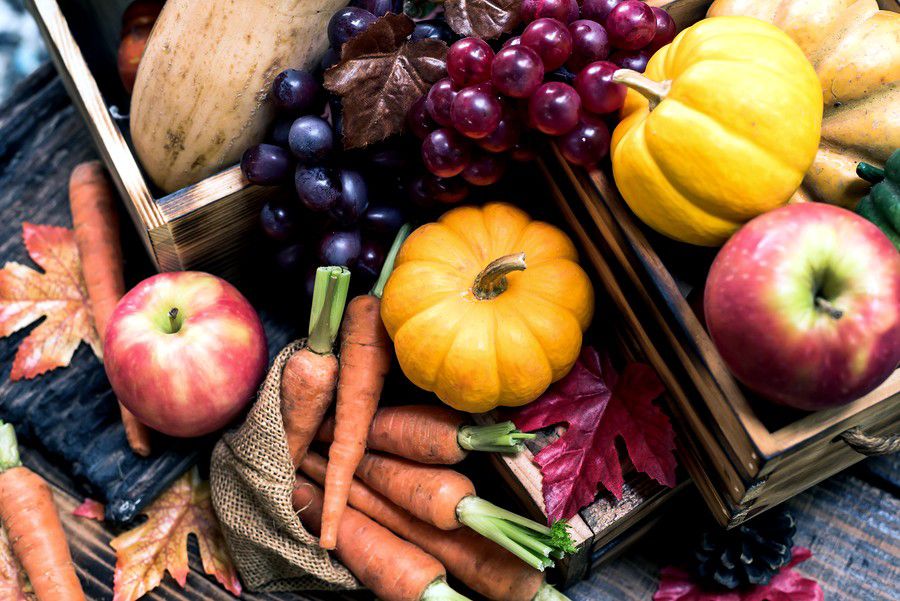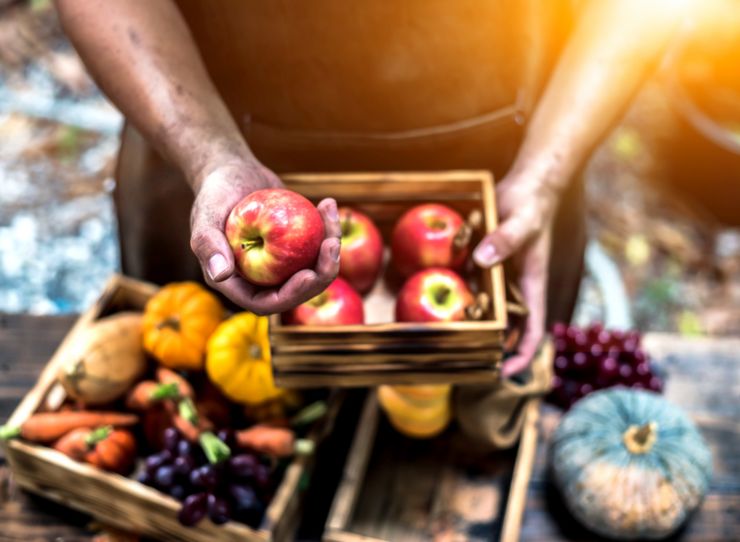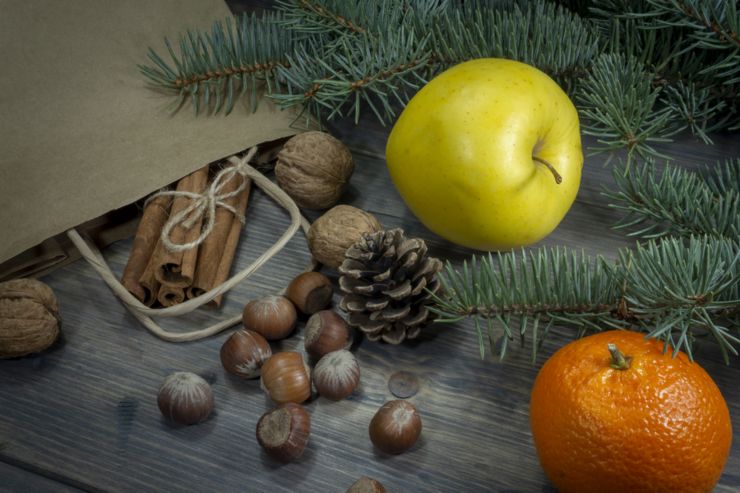Autumn fruits and vegetables to eat

As the nights start to draw in and the temperature starts to drop, you might be looking to swap your summer salads for something more warming and wholesome. A host of deliciously warming fruits and vegetables come into season just in time for autumn, including sweet treats like pears and cranberries, to broccoli, swede and celeriac. Read on to find out what delicious things you can cook with them!
SEPTEMBER
Fruit
ELDERBERRY
You may not have heard much of this little black berry. When you cook them, it is highly recommended to cook for a long time when adding to chutneys, sauces, etc. They also have quite a tart taste, so cooking with cinnamon and nutmeg is recommended to sweeten them up.
PEAR
Pears are the perfect alternative to an apple, and just like the apple, come in many variations. You can eat them raw, or poach them in delicious spices for a perfect dessert or breakfast! They can also be grilled or roasted, and are delicious with cheeses, particularly blue cheese. They are the ideal versatile autumnal fruit.

Vegetables
BROCCOLI
Broccoli is at it’s best in September and October, and has been said to be a vegetable you should eat every day, because it really is that good for you! Just two spears is one of your five a day, and can be enjoyed in so many different ways. You can steam, roast and boil broccoli, and add it to almost anything. It goes brilliantly with a roast, a simple pasta dish, a salad or even on top of a pizza!
SWEETCORN
Sweetcorn comes into season mid August to mid September, and is another brilliantly versatile autumn vegetable. When ripe, the bright yellow kernels in sweetcorn are juicy and sweet, and add a really great sweetness to many dishes and salads. You can either by sweetcorn whole and eat it off the centre, cooking it by grilling or boiling it. You can also boil the loose kernels and mix in with salads and pastas.

OCTOBER
Fruit
APPLE
Although apples are available all year round, they are at their best in the autumn. There are over 7,000 varieties of apples, grown all over the world. Apples often fall into two categories – dessert and cooking. Cooking apples tend to have a more bitter flavour, whilst dessert apples are delicious to eat as they are. Apples can be red, green, yellow, pink – and all the shades in-between! Apple’s can be enjoyed as they are, or in salads, or cooked into pies, crumbles and other desserts.
CRANBERRY
This ruby red berry really is the jewel of Christmas. It's sweet flavour perfectly compliments your Christmas turkey, but can be enjoyed in lots of other ways. As the berries are quite tart, they aren’t often eaten raw, more commonly drunk as a juice or in desserts.
Vegetables
BRUSSELS SPROUTS
This quintessentially Christmas vegetable comes into season in October until March and contrary to popular belief, are really quite delicious if cooked properly. A top tip to cooking these is to ensure you don’t over boil them, and taste really great alongside chestnuts or bacon bits. Maple syrup is also an excellent addition if you are pan frying them – yum!
SWEDE
Often confused with other root vegetables, the swede is actually part of the cabbage family and comes into season mid October to end of February. Swede is hard and yellowy-orange in colour. Whilst it might look scary to prepare, it’s actually very easy and delicious mashed together with potato or carrots.

NOVEMBER
Fruit
CLEMENTINE
Another very Christmassy fruit, and famously found at the bottom of stockings or as a centrepiece on the Christmas table. They come into season in November through to February. These are the smallest of the tangerine family, and contain no seeds. It’s super sweet and delicious as it is, or dipped in chocolate. They also contain many important vitamins and minerals – not to mention they are easy to peel!
DATE
Dates are the perfect sweet warmer, and also are an essential ingredient for many vegan recipes, as the sticky texture is often used to bind ingredients. Dried dates are available all year round, but the fresh come into season in November to January. Try dates as they are, with yogurt and granola or as part of a vegan-baking recipe.
Vegetables
CABBAGE
Different varieties of cabbage are available all year round, but they taste so good in the autumn months, it had to be on the list. Cabbage is a little misunderstood sometimes like Brussels sprouts, but can be so delicious. The key is to not overcook! Cabbage comes in green and red varieties, both boasting an impressive nutritional profile. Enjoy both as a side with a nut roast, or meat roast. Red cabbage tastes great with raisons and nuts for a Christmas dish.







